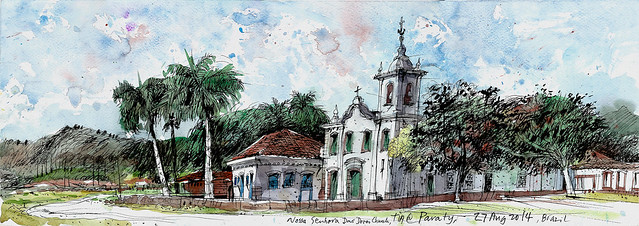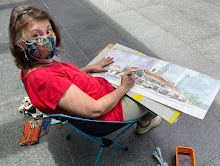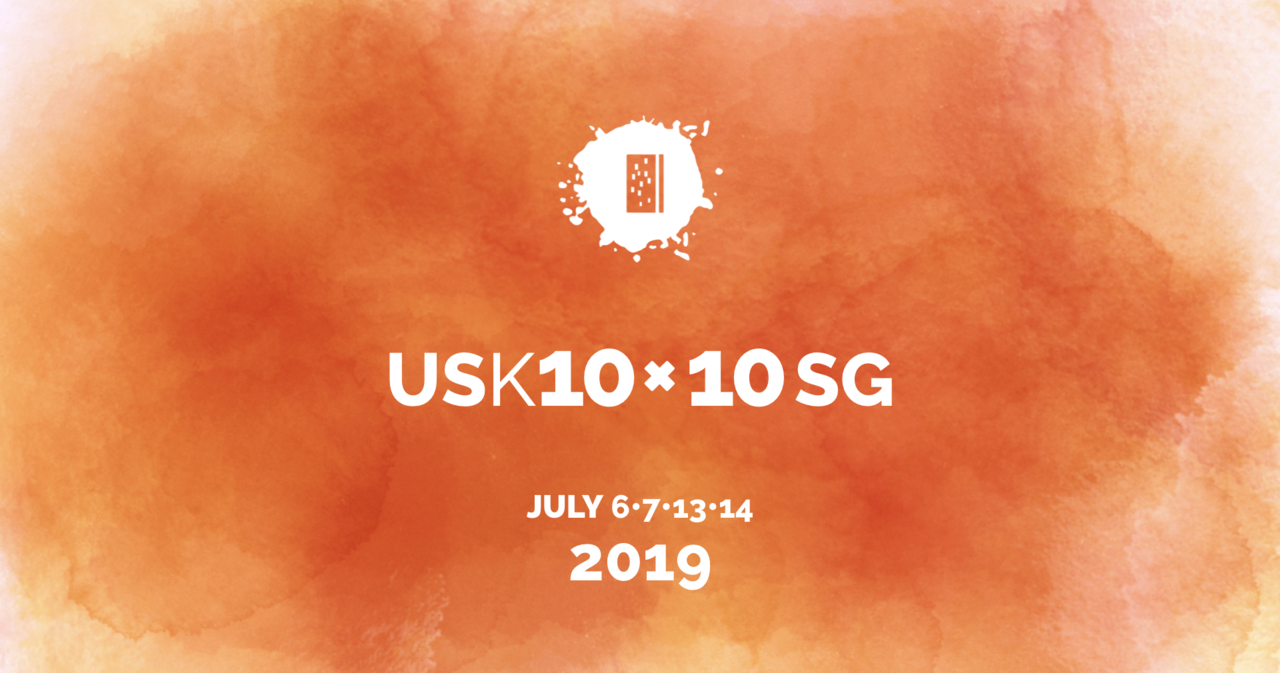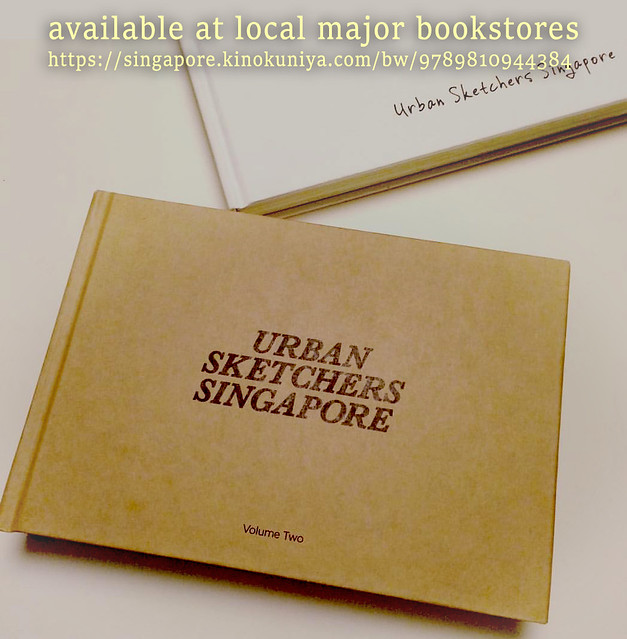
This is Igreja de Nossa Senhora das Dores, The Church of Our Lady of Sorrows, also the first loose ink and watercolour piece I did upon arrival at Paraty after a 5-hour journey on the road from Sao Paulo. This church was erected in 1800s on the initiative of the ladies of the aristocracy of the city. The church was abandoned around 1901, when the Brotherhood of Our Lady of Sorrows, composed exclusively of women, retired.
It is now known as "Chapel of Sorrows" or just "Chapel." There was only one tower now but originally it was designed to have two towers.
Similar to all Brazilian colonial towns, Paraty’s churches were built according to social status and race. There are four churches in the town, Santa Rita was for the ‘freed coloured men’, The Church of Our Lady of the Rosary and St. Benedict was for the blacks and two other churches for the whites.
Paraty is a beautiful colonial city paved with cobblestones which were left behind by the Portuguese who replaced them with heavy golds to ship back home in their huge vessels. Walking on these pavements was challenging although there were no cars at all. The small town was founded in 1667 around the Church of "Nossa Senhora dos Remedios", the patron saint. Paraty is famous for its sugar cane mills and the name "paraty" synonym of a very good sugar cane rum. I saw small bottles labeling "Cachaca" at local lifestyle stores catering for its large numbers of tourists and did not know it was a kind of distilled spirit made from sugarcane juice.
size : 680mm x 240mm









![Logo _Jan20_version7 [Converted]](https://farm9.staticflickr.com/8736/16890205286_287a880265_z.jpg)









![logo _jan20_version7 [converted]](https://blogger.googleusercontent.com/img/b/R29vZ2xl/AVvXsEgsbv1sOIGr9kVjb3X_EgbBQ17oUw7SOhF9PTHlFvvRT52MFjlXd-G5N0zdCOKTmzv7WEx1T-kOXGTvlSkZNn6hkECQVqPLx1Z9dDXldCjnUSJjU9pj6rzUIYNq36_bFq3nR2tk/s1600/amsterdam.png%20width=)
![logo _jan20_version7 [converted]](https://blogger.googleusercontent.com/img/b/R29vZ2xl/AVvXsEizAeyepSIKwbPCSyEYjo_qHo2k9PDLZG5fgI83UfzRau9_bFete290u2VaKo9jz3vVNuWhYW7XaCIuQg6H6vqmoe6PGzcslMvOmVVy3p2bxZJEQDe1qw1IP4HF1e-2aGXK1zPd/s1600/Chicago2017_FINAL-01.jpg%20width=)
![logo _jan20_version7 [converted]](https://blogger.googleusercontent.com/img/b/R29vZ2xl/AVvXsEhAx-I7YEnxmSezaoySaLCOEvNulDrrMQONznyBU7Z6ajYEaP5-P7mtCXvpPtRohAxvGrfYSbIs5sFlrh8ldSclFZQZiSCuFfdMOHv1OKyXedSlk66TL0eumFJFNcSWgoi_u8lwxg/s900/Urban_Sketchers_Manchester_2016_Black.jpgwidth=)




